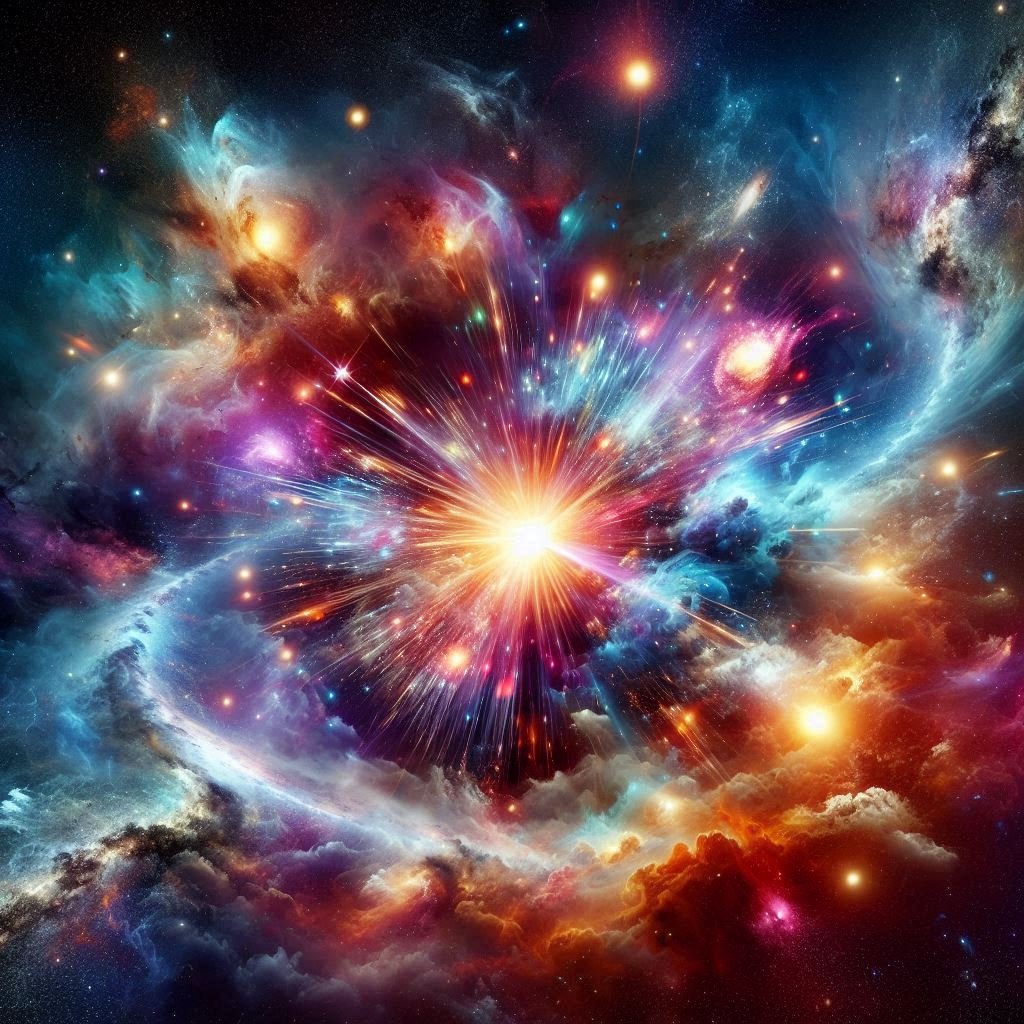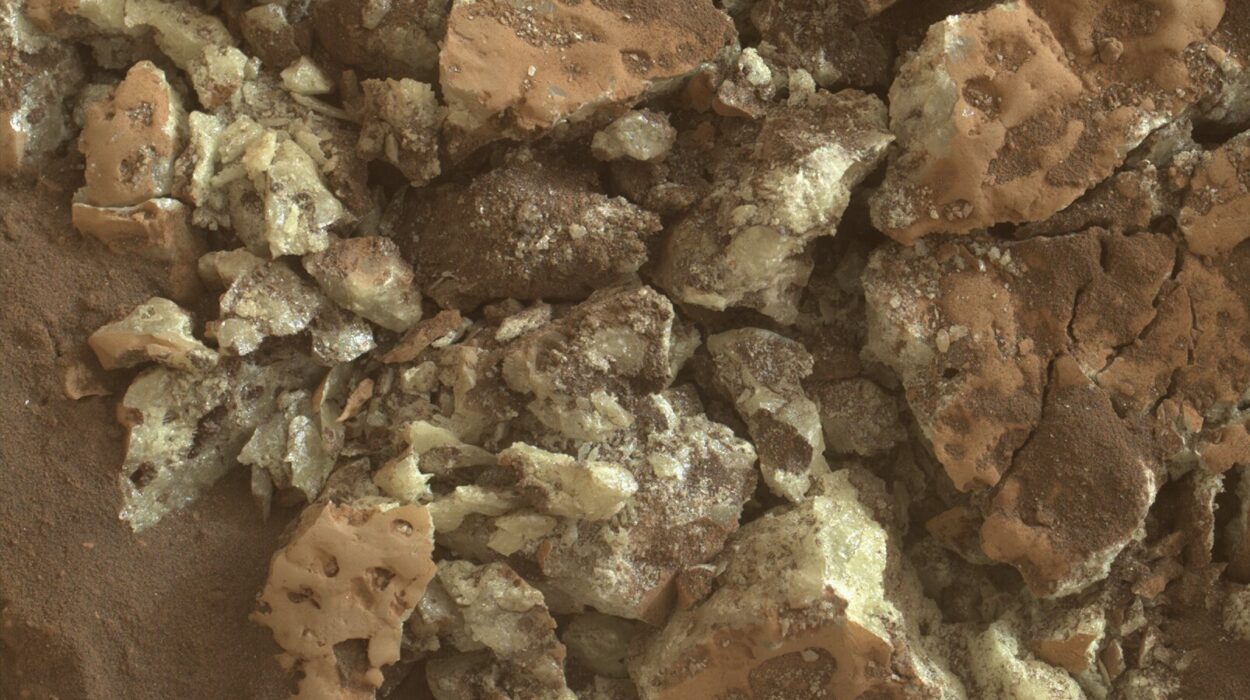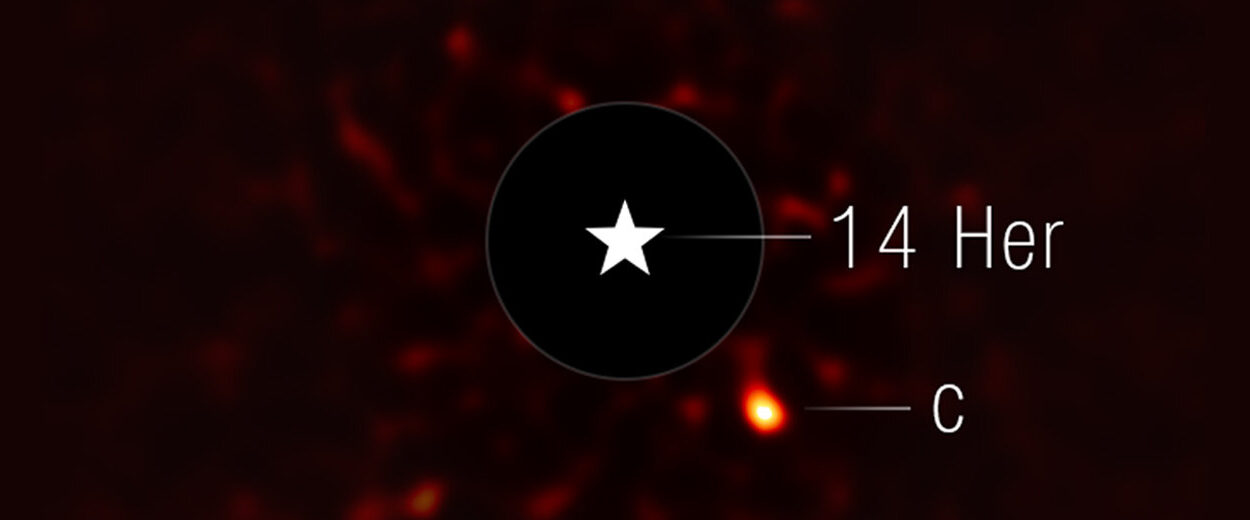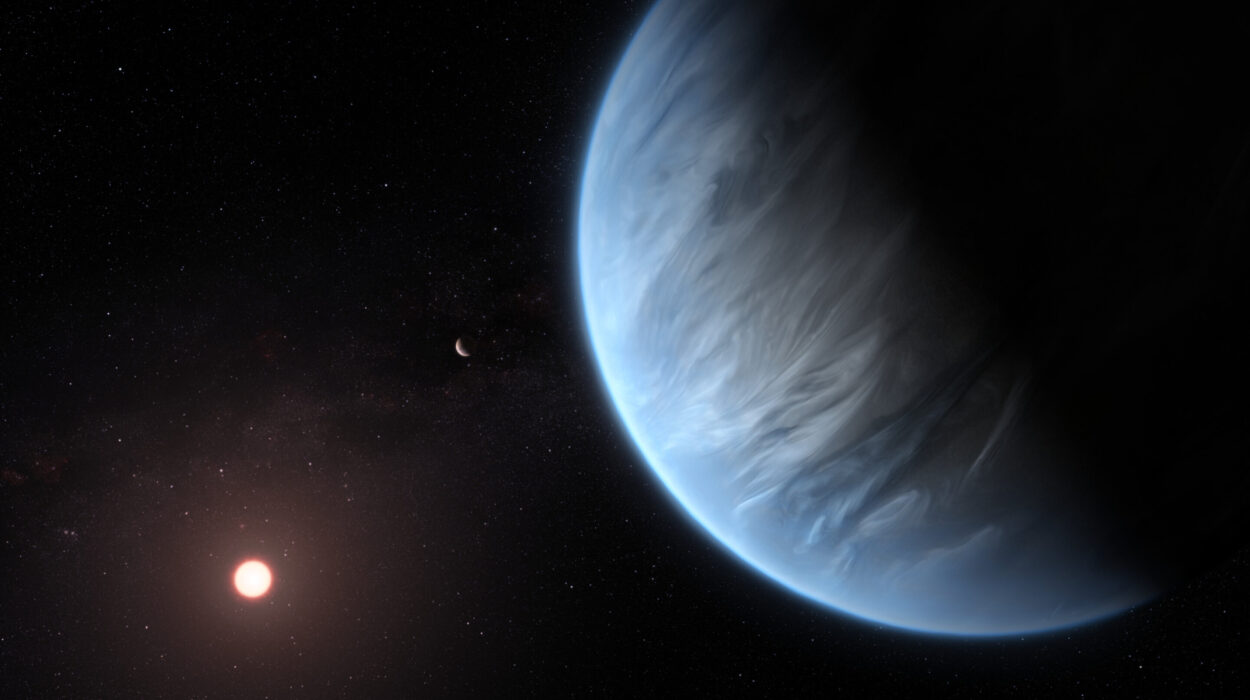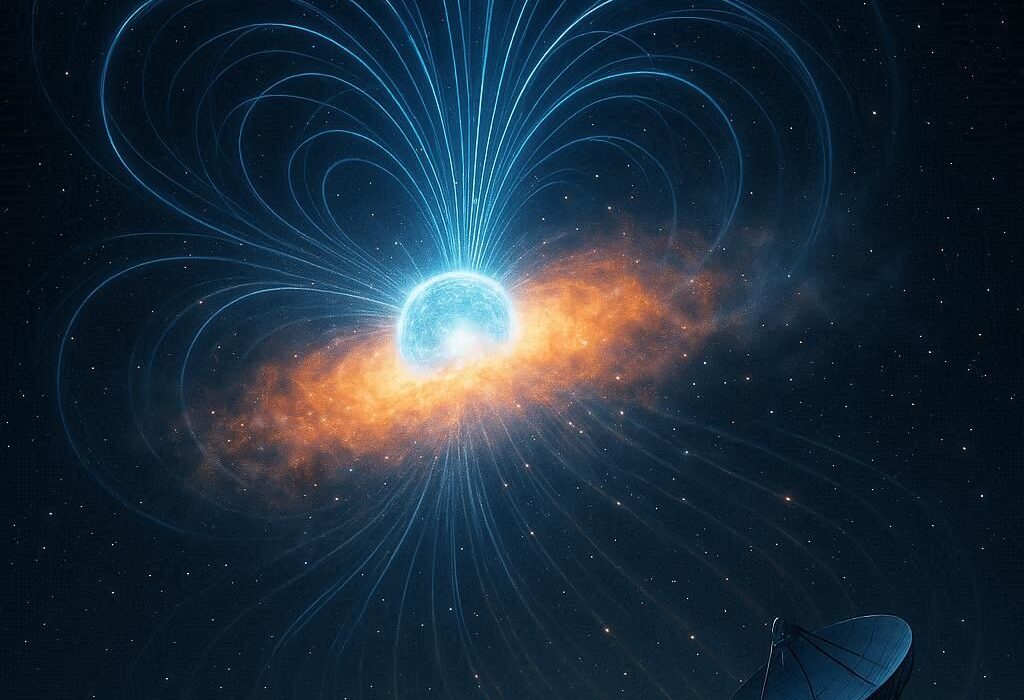Long before stars blazed in the heavens, before galaxies spun in the darkness, before time itself began to tick, there was… nothing. At least, that’s how the story goes.
It’s hard to imagine “nothing.” Close your eyes and try. Darkness? Even that’s something. Silence? That’s still a sound of sorts. But there was a time—or perhaps a moment before time—when there wasn’t even space. There was no “out there” to speak of. No atoms, no energy, no you or me. And then, something extraordinary happened.
Roughly 13.8 billion years ago, in a fraction of a second smaller than anything your mind can comfortably grasp, everything changed. That moment, which scientists call The Big Bang, wasn’t an explosion in space. It was an explosion of space.
The universe didn’t burst into existence inside a dark and empty void. There was no “outside” to expand into. Space itself was swelling, growing like an inflating balloon. And inside that balloon was the beginning of everything we now see—the galaxies, the stars, the planets, and eventually, life itself.
But how do we know? And why do we believe the universe began this way? To answer that, we need to rewind the cosmic clock and explore the birth of modern cosmology.
The Clues Left Behind
You don’t need a time machine to look into the past. All you need is a telescope.
Every time we look up at the night sky, we’re seeing ancient light. The farther away an object is, the longer its light takes to reach us. The moon? A little over a second. The sun? About eight minutes. But some of the faintest galaxies visible to modern telescopes are so far away that their light has traveled for billions of years.
In the early 20th century, an astronomer named Edwin Hubble peered through his telescope and made a remarkable discovery. As he studied distant galaxies, he noticed something odd. Their light was redder than expected. Not because they were red, but because the light waves had been stretched as they traveled through space.
It was as if these galaxies were running away from us. And not just a few of them—all of them.
Hubble’s discovery, known as the redshift, was the first solid clue that the universe was expanding. If everything is moving apart today, it means the universe was smaller yesterday. Smaller still, the day before. Keep rewinding, and it all crunches down to a single, unimaginably dense point.
A singularity. The ultimate beginning.
But Hubble’s redshift was only the start.
In 1965, two scientists, Arno Penzias and Robert Wilson, were fiddling with a giant radio antenna in New Jersey. They were trying to tune out some annoying static—an irritating hum that just wouldn’t go away, no matter where they pointed the thing.
That hum turned out to be the cosmic microwave background radiation, or CMB for short. It was a faint glow left over from the birth of the universe, a kind of heat echo from the Big Bang itself. It was as if the universe was still whispering about its fiery birth, even billions of years later.
This discovery earned them a Nobel Prize and solidified the Big Bang theory as the leading explanation of how our universe began.
What Exactly Was the Big Bang?
The Big Bang wasn’t like a regular explosion. There was no bang in the sense of dynamite or fireworks. No sound, no light as we know it. Instead, it was an expansion—an event where space itself began to grow from a tiny, hot, and dense state.
Scientists believe that, in its earliest moments, the universe was smaller than a subatomic particle. A speck of everything. It was unimaginably hot—so hot that even atoms couldn’t exist. Only pure energy.
Then, in a fraction of a second, the universe expanded at a breathtaking speed in a process called inflation. In less than a blink, space stretched faster than the speed of light, smoothing itself out and cooling just enough for energy to turn into matter.
First, the tiniest building blocks of matter formed—quarks, gluons, electrons. Within minutes, these particles combined into the simplest atomic nuclei: hydrogen and helium.
For hundreds of thousands of years, the universe was still a dense, hot soup of particles. Light couldn’t travel freely. It was only about 380,000 years after the Big Bang that the universe cooled enough for atoms to form. Atoms allowed light to stream through space, creating that cosmic microwave background radiation Penzias and Wilson stumbled upon.
After that, it took millions of years for gravity to pull matter together, forming stars, galaxies, and eventually planets.
Time, Space, and the Laws of Nature
One of the strangest things about the Big Bang is that it wasn’t just the birth of matter and energy. It was the birth of space and time themselves.
Before the Big Bang, asking “what was there” or “what happened” doesn’t make sense in the traditional way. Time as we understand it didn’t exist. There was no “before.”
The Big Bang wasn’t just a place in space—it was everywhere. Every point in the universe was once concentrated into that single beginning. And as space expanded, it didn’t expand into anything. Space itself was growing.
Even more mind-bending is the fact that the fundamental laws of physics seem to have emerged in those first fractions of a second. Forces like gravity, electromagnetism, and the strong and weak nuclear forces shaped the universe from its very first moments. Tiny changes in how strong or weak these forces were could have led to a universe where atoms couldn’t form, stars never ignited, or life was impossible.
We live in a universe finely tuned for life, and that makes scientists wonder: why? Was it luck? Design? Or is ours just one universe in an endless multiverse, each with its own laws?
The First Stars and Galaxies
The universe’s first billion years were a dark time—literally. After the glow of the cosmic background faded, there was no light but the faintest embers of heat.
Then, gravity worked its magic.
Tiny ripples in the density of matter—quantum fluctuations stretched by inflation—gave gravity something to work on. Matter clumped together, slowly collapsing under its own weight. Where enough gas gathered, pressure and temperature skyrocketed until, finally, fusion ignited.
The first stars were born.
These Population III stars were massive, hundreds of times the size of our sun. They burned hot and lived fast, exploding in enormous supernovae that spread heavier elements like carbon, oxygen, and iron across space. Those elements seeded the next generation of stars—and ultimately, planets like Earth.
Galaxies began to form as stars clumped into clusters, spinning and dancing in immense cosmic cities. Over billions of years, these galaxies merged and grew, creating the grand structures we see today—spiral galaxies like our Milky Way and giant elliptical galaxies, each containing billions or even trillions of stars.
Our Place in the Universe
About 4.6 billion years ago, in an outer arm of the Milky Way, a cloud of gas and dust collapsed. A star was born—our sun. Around it formed planets, including Earth, which cooled and eventually gave rise to life.
Every atom in your body—carbon, oxygen, iron—was forged in the heart of a star. You are literally made of star-stuff, as Carl Sagan once said. The Big Bang made hydrogen and helium, but stars made the rest.
Our planet is a tiny speck in an immense and ancient universe. Yet, from this small world, we’ve looked back in time to the birth of everything.
What Came Before?
The Big Bang theory describes what happened from the first instant after time began. But what about before?
That’s one of the biggest mysteries in cosmology. Some scientists think the Big Bang was a beginning, full stop. Time and space were born in that moment.
Others think the Big Bang may have been part of a cycle—an endless series of universes expanding and contracting. Some suggest our universe could be one bubble among many in a vast multiverse, each with different rules.
Quantum mechanics hints that the vacuum of space may not be truly empty. Particles pop in and out of existence constantly. Maybe, just maybe, a universe can emerge from “nothing” under the right conditions.
But these ideas remain speculative. We may never know for sure. The beginning of everything might be forever cloaked behind a cosmic veil.
The Future of the Universe
If the universe had a beginning, will it have an end?
For decades, scientists debated whether gravity would eventually slow the universe’s expansion, causing it to collapse in a Big Crunch. But in the late 1990s, astronomers discovered something surprising: the expansion isn’t slowing. It’s speeding up.
A mysterious force called dark energy seems to be pushing galaxies apart faster and faster. If this continues, the universe will keep expanding forever, growing colder and emptier over trillions of years in a scenario called the Big Freeze.
Eventually, stars will burn out. Black holes will evaporate. The universe will fade to black, a cold, dark void.
Or maybe not. Some scientists speculate about a Big Rip, where dark energy grows so powerful that it tears galaxies, stars, planets, and even atoms apart.
It’s a sobering thought—but it’s far, far in the future. We still have time to ponder our place in the cosmic story.
The Human Connection
Why does the Big Bang matter? Beyond the science, it’s about understanding where we came from.
The Big Bang theory connects us to the deepest origins of the universe. It tells a story that includes everything—space, time, energy, matter, and life. It’s a story we’ve pieced together using human curiosity, creativity, and science.
From ancient people who stared at the stars to modern astronomers with billion-dollar telescopes, we’ve always asked the big questions. Why are we here? What’s out there? Where did it all begin?
The Big Bang offers some answers—and leaves us with even more mysteries to explore.
The Next Frontier
We stand on the edge of discovery. New telescopes like the James Webb Space Telescope are peering deeper into the past, capturing light from galaxies formed just a few hundred million years after the Big Bang.
Physicists are probing the nature of dark matter and dark energy. Some dream of a Theory of Everything that unites the laws of quantum mechanics and general relativity into a single framework, explaining the true nature of space, time, and existence.
One day, we may unlock the ultimate secrets of the Big Bang—or we may find an even bigger mystery waiting behind it.
Epilogue: From Nothing to Everything
Once, there was nothing.
Now, there’s everything.
A universe of a hundred billion galaxies, each with a hundred billion stars. A cosmos so vast and ancient that our minds struggle to grasp it. And yet, here we are, thinking about it, asking questions, searching for meaning.
The Big Bang was the beginning of everything. But for us, it’s just the beginning of the story.
What comes next… is up to us.
